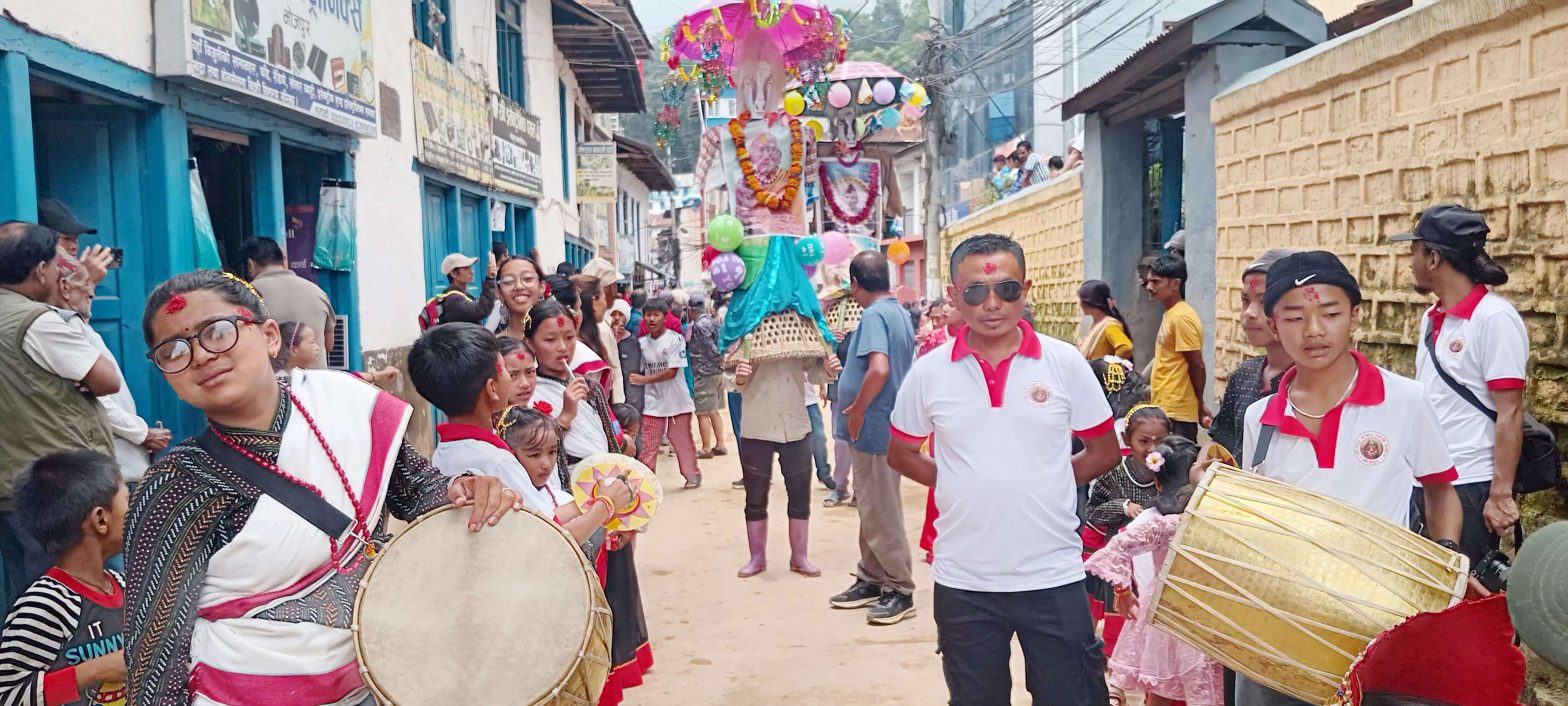Kathmandu: Gaijatra, a vibrant cultural festival celebrated in the Kathmandu Valley and several other parts of Nepal, is being observed today with a mix of fun, humor, and satire.
The eight-day festival begins on the first day of the waning moon in the lunar month of Bhadra (Bhadra Krishna Pratipada) and ends on Ashtami. It is dedicated to honoring those who passed away within the past year.
As part of tradition, cows or people dressed as cows parade through the streets, receiving offerings of milk, fruits, beaten rice, traditional bread, curd, grains, and money from onlookers. These rituals are believed to aid the departed souls in their journey to the afterlife.
The origins of Gaijatra trace back to the reign of King Pratap Malla, who instituted the festival to comfort his grieving queen after the death of their son during a smallpox epidemic. Citizens were encouraged to engage in humor, satire, and public performances to show that loss is a shared human experience.
Over time, Gaijatra became a platform for satirical expression, often highlighting political and social issues. The festival was banned after the royal coup of 2017 BS but revived in 2033 BS by the then Nepal Royal Academy (now Nepal Academy).
While the three cities of the Kathmandu Valley remain the core of Gaijatra celebrations, it is also observed in Banepa, Dhulikhel, Panauti, Barhabise, Trishuli, Dolakha, Khotang, Bhojpur, Chainpur, Dharan, Biratnagar, Birgunj, Hetauda, and Pokhara, especially within the Newar community.
The government has declared a public holiday in the Kathmandu Valley today for the occasion.
